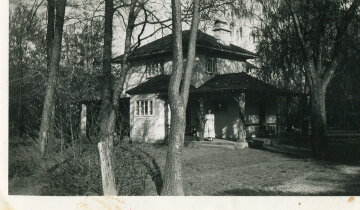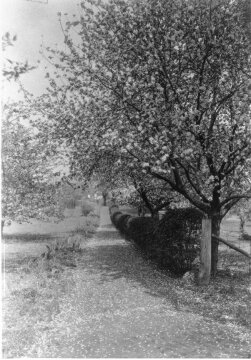A more simplistic lifestyle punctuated by small housing with few amenities fostered communion with nature. Especially considering Arden’s early years as a summer camp for families and youth, it is no surprise that the somewhat cramped architecture invited residents to spend more time outdoors with other community members.
As noted earlier, residents cultivated a relationship with the natural world around them by using local materials to build their housing: half-timbering from the surrounding woods, local stones, and indigenous tile for roofs. Such design decisions were not only more economical for the fledgling community, but they also actively shunned industrialized building materials produced elsewhere. The materials and labor that built Arden’s houses were Arden’s alone.
In addition, nature was essential in the planning of Arden. As George E. Thomas writes, Will Price utilized Arden’s natural surroundings—particularly Naaman’s Creek and woods—as a way to both incorporate nature into the community and separate Ardenites from the outside world. And in accordance with William Morris’s principles, houses were to be built into the forest at the back.
Price was influenced by the Garden City movement in England. The movement, writes Nikolaus Pevsner, shared much with the Arts and Crafts movement and sought to provide quality housing and recreation areas for industrial workers, including parks, bath houses, and sports fields. In all, the Garden City movement sought to create “an ideal harmonious community of all classes and generations.”



